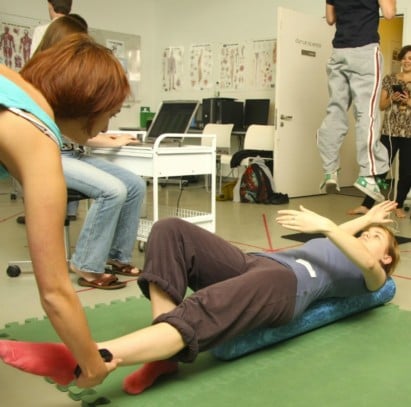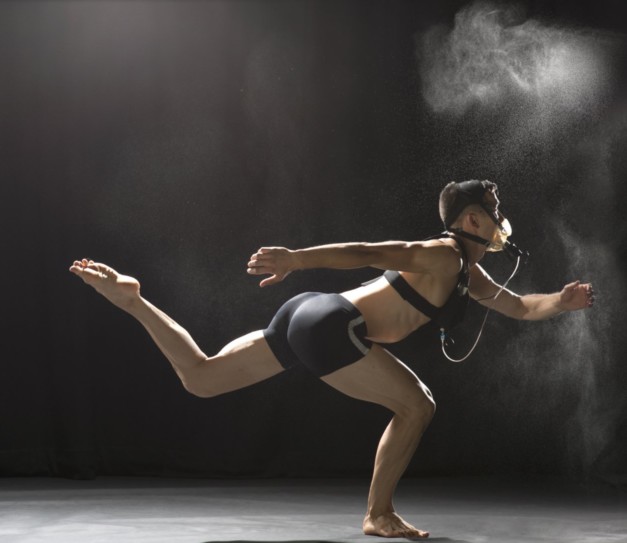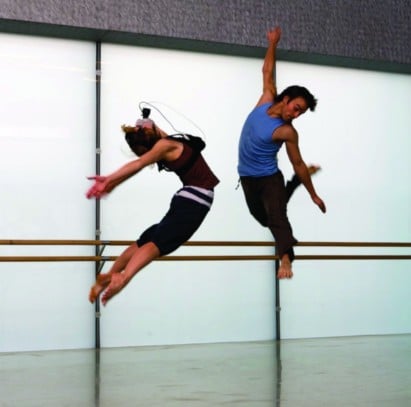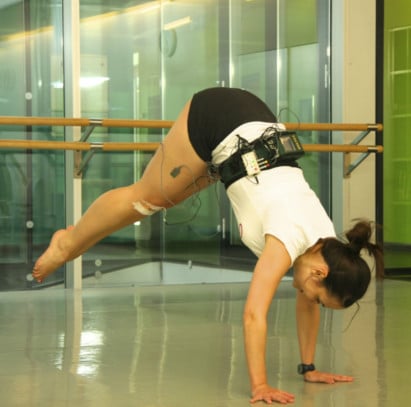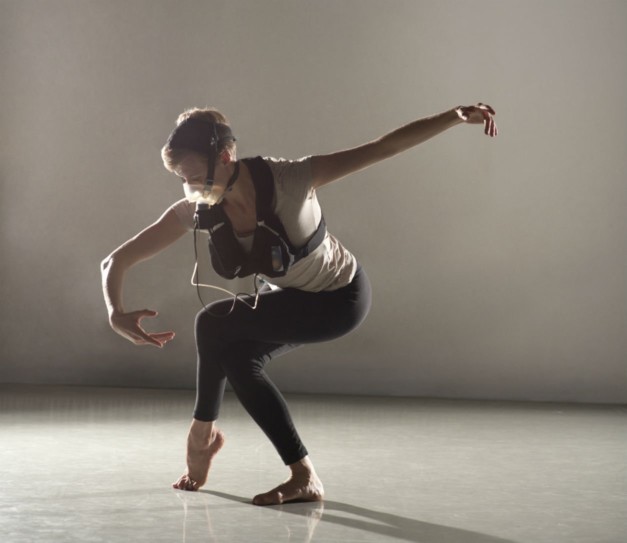Dance Science Gallery
On our dance science programmes you can explore dance practice and performance from theoretical and applied perspectives, through a range of scientific disciplines and in a variety of dance contexts.
The MFA Dance Science is a 2-year research-focused postgraduate programme, which broadens the possibilities within dance science research and study. The first year shares module content with students on the MSc Dance Science programme. An extended independent project forms the second year, as the defining feature of the MFA Dance Science.
The MFA Dance Science is a research-focused programme that explores the dance phenomenon from an interdisciplinary, integrative, and holistic approach. It explores both individual and contextual perspectives in dance by using systematic research methodologies and implementation approaches, recognising the role of the dance phenomenon in guiding the scientific enquiry. This programme is designed to assist professionals, practitioners and graduates from both dance or science related areas to investigate the intersections between science and dance tailored to the specific interests and career goals of each student, enhancing the understanding, application, and dissemination of dance science research in applied contexts of dance practice and performance. The diversity of experiences and backgrounds of both students and faculty makes it a thriving and organic interdisciplinary learning experience.
MFA Dance Science (Level 7)
| Modules | Credits |
| Approaches to Performance Research | 30 |
| Foundations in Performance Science | 30 |
| Performing Research 1 | 15 |
| Performing Research 2 | 15 |
| Applications in Dance Science | 30 |
| Extended Project | 140 |
The programme is 2 years full time, delivered in a flexible way, including weekly contact hours on specified days either online or in person, intensive seminars as relevant, and self-directed study.
The first year or Part 1, full time consists of the taught programme, also shared with the MSc Dance Science. The taught modules vary in their contact hours relative to the module aims and awarding credits (for an outline of contact hours per module, refer to the individual module specifications). For guidance, we usually expect students to undertake 10 hours of learning activity towards each unit of credit. Learning takes place through a blend of digital and face to face learning activities including seminars/webinars, practical classes, and other and experiential learning tasks, as well as independent practice and reflection, work towards assignments, tutorials and self-directed study. Digital platforms will play a significant role in supporting learning and communication.
The second year or Part 2 of the MFA consists of the Extended Project module and is characterised by self-directed research and study towards the creation of a substantial and thorough research project. MFA students can also choose to expand their skills set through a range of enhanced extra-curricular career-oriented activities.
Flexible route
A flexible route is also available to MFA students allowing students to complete modules over a period of three years. MFA students can complete the programme in 3 years as long as the modules are taken in the following order:
Applications in Dance Science and Extended Project can only be taken after all the previous modules were taken
For more details, take a look at the programme specification or email the Programme Leader, Catherine Haber c.haber@trinitylaban.ac.uk
The MFA Dance Science consists of approximately 2600 notional learning hours. The five taught modules vary in their contact hours relative to the module aims and awarding credits.
Following a blended learning approach, students will learn through a wide variety of flexible learning and teaching methods both in digital and in person learning environments, underpinned by a significant amount of self-directed learning. The learning and teaching strategies include webinars and seminars, digital and practical workshops, group and individual tutorials, peer and tutor led discussions, mini-conference days, studio-and lab-based application, as well as independent and self-directed work. Students will be encouraged to work collaboratively with peers within and external to their programme as part of their learning experience.
To assist learning, students will have access to a range of additional support provided by the dance science laboratory team, student support, audio-visual and digital enhanced learning teams, as well as library support. Individual and/or group tutorial support is offered to students in preparation for assessments. Academic tutor office hours are also available to students.
The range of summative and formative assessments are designed to reflect the knowledge and skills required of graduates entering the dance science sector and centre on a critical examination of dance science theory and research as applied to dance practice. Students will be assessed according to their ability to meet the learning outcomes for the module, and against any specific assessment criteria provided.
Assessment tasks include developing a project proposal, provide a learning portfolio that includes a range of learning tasks (e.g., reports, critical reviews), group project lab reports and poster presentations, a case study, and culminates with a written journal article accompanied by a dissemination output of choice.
Assessment modes include individual and group assessments in written, oral, and practice-based presentations, in digital and/or in person contexts.
The programme aims to extend the range of practice, educational, research and employment possibilities available to graduates. An MFA Dance Science is likely to appeal to graduates wishing to pursue a career in higher education, especially where a terminal degree is required.
As with the MSc, graduates can go on to become consultants for dance companies, training institutions and national dance organisations. Some might pursue further study at PhD level. Others will use their dance science knowledge to inform their practice as dancers, teachers, rehearsal directors or choreographers.
For more information on the successes of Trinity Laban’s Dance Science graduates and what they have to say about the course, visit Alumni Profiles.
We welcome applications from students with prior dance experience, who are interested in investigating the science and art of dance. Applicants should be able to demonstrate their capacity to undertake independent self-directed research over an extended period of time and propose a research question that warrants the depth and breadth that an extended project time frame can afford.
The choice between pursuit of an MSc or MFA programme of study will depend upon the applicant’s prior experiences and future aspirations.
English Language requirements
IELTS Band 6.5 overall with a minimum of 5.5 in all four areas (General English Test) or above (or equivalents).
If you require a Student visa to study in the UK, please be aware of its English language requirements, as they may differ. Secure English Language Tests and levels can be found at gov.uk. In addition, meeting external requirements of UK Visas and Immigration is essential.
Please visit the Dance Applications page for full details of entry requirements and the application process for this programme.
Fees are reviewed annually and may increase by up to 5% each year. The following fees are confirmed.
| Full Time: September 2023 entrants | ||
|---|---|---|
| Year | HOME | INTERNATIONAL |
| Year 1: 2023/24 | £5,870 | £13,240 |
| Year 2: 2024/25 | £6,110 | £13,770 |
| Total Fee: | £11,980 | £27,010 |
This information can be found on our Costs of Living page.
Read about financial awards and external funding opportunities in the Fees and Finance section.
| UCAS | 500M |
|---|---|
| Location | Laban Building |
| Duration | 2 years (full time) |
| Start Date | September |
On our dance science programmes you can explore dance practice and performance from theoretical and applied perspectives, through a range of scientific disciplines and in a variety of dance contexts.
